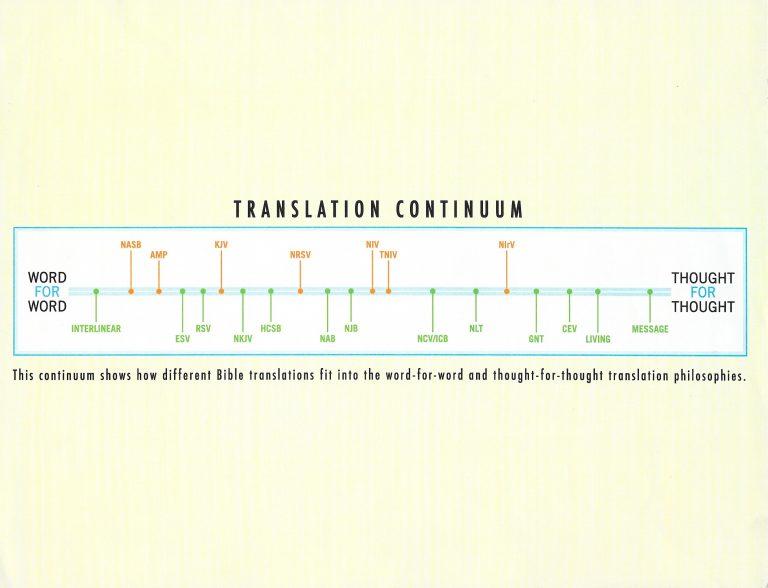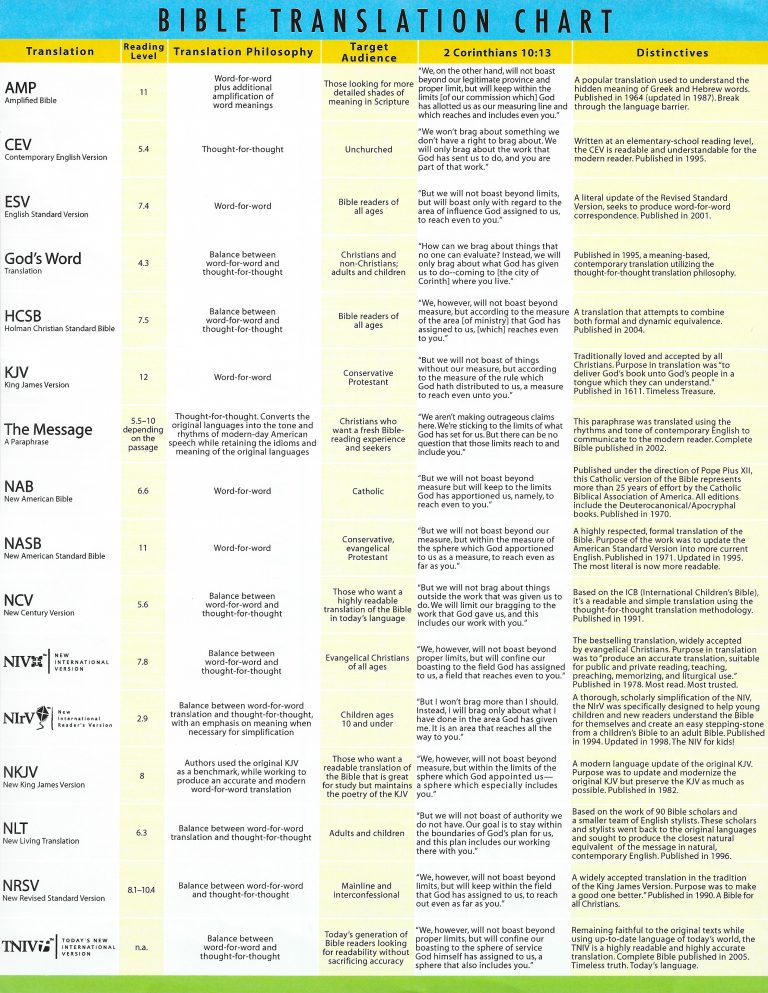Many Christians have very strong views and opinions about which Bible is the best one to use when you study. “Best” generally has to do with accuracy of translation or the original manuscript that the English Bible is based on.
Let me put your mind to rest. There is no completely accurate translation. Ask anyone who speaks more than one language if it is possible to translated from one language to another with absolute accuracy. The answer is “No” because even easy words like “dog” carry different connotations or feelings from one language to another.
That said, some translations are better than others. My first rule — if you want to call it that — is to not use a paraphrase for Bible study. These are fine for reading through the Bible or to get someone else view of a text, but not for serious study. Just like you would want to hear an explanation of how the heart works for yourself rather than trust to my notes, you should begin with God’s words, not my thoughts about His words.
Now that you know a bit more about translations verse paraphrases, the other major issue is the original manuscript used as the basis for the translation. I personally favor Bibles that are based on the Textus Receptus (the Received Text). My preference is based on years of study regarding the history and development of the English Bible.
For a number of reasons there are variations between the original text manuscripts. These variation are reflected in the choice of words in the English translations. You need to understand this when you consult other translations or study in a group where multiple translations are being used. It is easy to label a version a “bad translation” when it is simply based on a different manuscript.
I favor selecting one translation as your foundation. Throughout your study you may consult many other translations as you study. (I have at least a dozen, including two paraphrases, that I commonly use when studying.) For your foundation translation, I recommend a translation that is more of a word-for-word translation than a thought-for-thought translation. (See the Translation Continuum below) This is my recommendation because most translators are not Jewish (most of the authors of the Bible were) and none of the translators are ancient Jews. They do not, no matter how much they have studied, know the thought patterns of ancient Jews; therefore, I have a difficult time believing that they can know what the author meant when he wrote (the basis for a thought-for-thought translation) what he wrote.
Below is a Translation Continuum that plots the most common translations from Word-for-Word to Thought-for-Thought.

Looking at the chart above and my previous comment, you can probably guess that I don’t use either the Living Bible of the Message paraphrase. At the same time, I’ve not delved into using an Interlinear Bible either.
The chart below tells you a little more about each of the translations on the Translation Continuum above.

My foundation translation is the New King James Version. I have two Study Bibles (with all the historical and cultural information): a King James Version and a Holman translation. These three Bibles are my core for Bible study. But as I said perviously, I have a number of other translations that I reference when digging deep into a text or passage.
Several years ago, I was in a small group study and this topic came up. The discussion was intense. My friend, a doctoral Archaeology student, stated that from his study the New King James was the best translation. Many in the group strongly disagreed with him. Then he made this comment that silenced everyone: “The best version is the one you will read.” There it is. Find one that you can read comfortably, but not lazily, remember study is the goal. This choice may change as you study. When a dear friend of mine returned to the Lord, she began by reading the NIV. Now she reads the KJV. As you grow and mature in your relationship with Jesus, so might your preference.
So this week find your foundational translation. If you already have one, great. Either way, I hope you will join me next week.
P.S. Once you have your Bible, start reading it.
(The charts used in this post were obtained at a Mardel’s store and not based on my personal study.)




